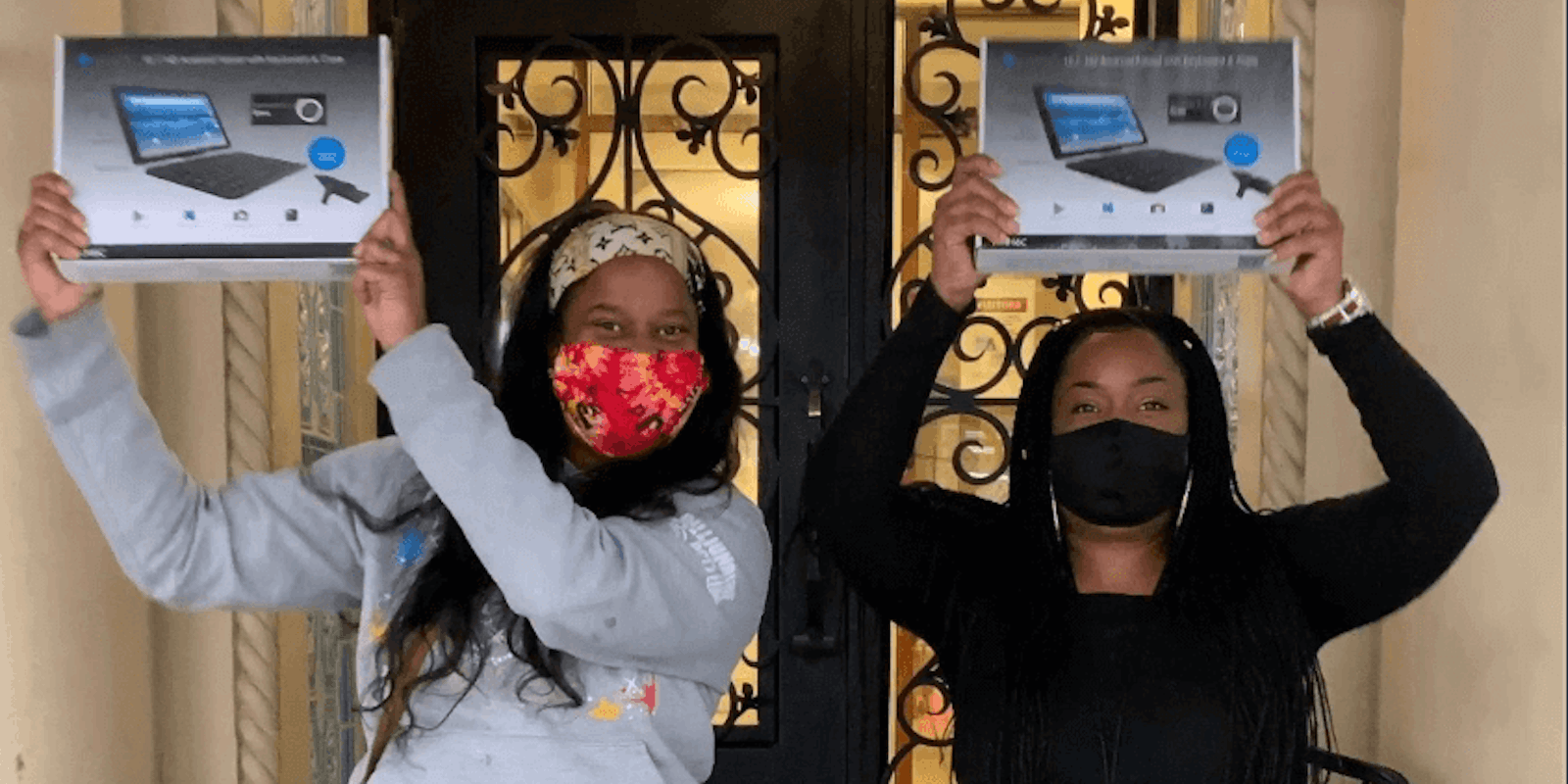University of Texas at Austin student Sam Lustberg was able to resume classes online shortly after the coronavirus pandemic closed schools and campuses across the country—but her and her sister, Sydney, couldn’t help but think of the many young adults that don’t own connected devices.
So they decided to take the newfound free time and launch a fundraiser to help get people connected called Donate Devices.
When the coronavirus pandemic forced schools to close in March, homes became the new classroom. But, not every home is equipped with devices and the internet to connect students to their new schooling environment.
Lustberg launched Donate Devices under Community Versus COVID-19 to reduce what has been coined the “homework gap,” the group of an estimated 12 million students that cannot complete their homework due to inaccessibility to the necessary means, either because of affordability or connectivity.
These students fall into the digital divide, the gap between Americans with the ability to access and afford high-speed internet and those who don’t.
The Federal Communications Commission (FCC) has made closing the digital divide and the homework gap its most public-facing issue during the pandemic, and there have been calls for it to expand its E-Rate program. The program provides schools with subsidies for lower-priced devices and broadband.
“There are over 24 million Americans who do have access to virtual learning and connection,” Lustberg said. “In our initial program, we will be providing over 200 students with tablet bundles to access their virtual education and elderly with the ability to connect with loved ones.”
Lustberg, her sister, and their growing team of seven people are raising money and collecting old devices for two New York area charities. Lustberg is from New York.
The two charities are Good Shepherds Services, which is a student support program, and Fountain House, a recovery community for previously homeless and those with mental illness. For now, they are focusing on the greater New York City area.
So far they’ve raise $15,000 of their $20,000 goal and bought 75 devices.
Donate Devices went on their first trip into New York City on May 6 to bring 20 devices to the Marian Hall Residence, Good Shepherds shelter for abused girls.
“Usually (the girls) are able to go to school or their jobs during the day and then come back to a safe place for them,” Lustberg said. “Now since they’re stuck there due to the pandemic, (the shelter) is their education place as well, but they don’t have technology.”
Now that the shelter has connected devices, employees told Lustberg that they intend on having teachers come in and give coding lessons to the girls.
The FCC has taken much of the criticism for its inaction in face of the digital divide. But, the Department of Education in New York has certain guidelines that are also preventing students from connecting to their teachers.
“I think the DOE needs to understand the situation on the ground because students are scared they could get sent out of their living situations,” Lustberg said.
Parents or teachers can request an iPad for a student from the state through their online application process. But, even the application itself is neglecting to include those without internet, Lustberg said.
For the many children that do not live in a stereotypical household, these guidelines prevent them from joining their online class. In some cases, students without homes don’t know where and how to apply. In other cases, students who live in homes with more than one family or with undocumented family members keeps them from applying out of fear.
Principals in the New York City area explained student situations like these to Lustberg and her team, she said.
Regardless, schools are still moving forward with or without connected and unconnected students. Before Donate Devices, girls at Marian Hall were trying to keep up with class on their cellphones.
“Imagine doing seven subjects a day on a cellphone,” Lustberg said an employee told her. “The devices from Community V COVID-19, are one way for the youth to regain academic connections, direct online support from their teachers, guidance counselors, and advisors.”
Donate Devices is one initiative under Community v COVID-19, a 501(c)3 organization and advocacy group started by Harvard students Raquel Schreiber and Brendan Lind.
“The Community V COVID-19 Device Donation initiative is our largest hands-on effort thus far,” Schreiber told the Daily Dot. “The project is exciting because of the impact it has had—both in the number of devices being delivered, and in the number of partners Sam has helped at no cost, behind-the-scenes, by connecting other non-profits and schools to resources they can access themselves.”
Lustberg is a student helping fellow students. Although her semester has come to an end, she doesn’t see Donate Devices slowing down until all students are connected.
“This ends when all kids get access to connectivity and that those devices are being updated,” Lustberg said. “Students like us get a laptop every couple of years and I think this needs to be a streamline process so that they are getting that same access to 2020 devices like the rest of the students so they don’t fall behind.”
READ MORE:


